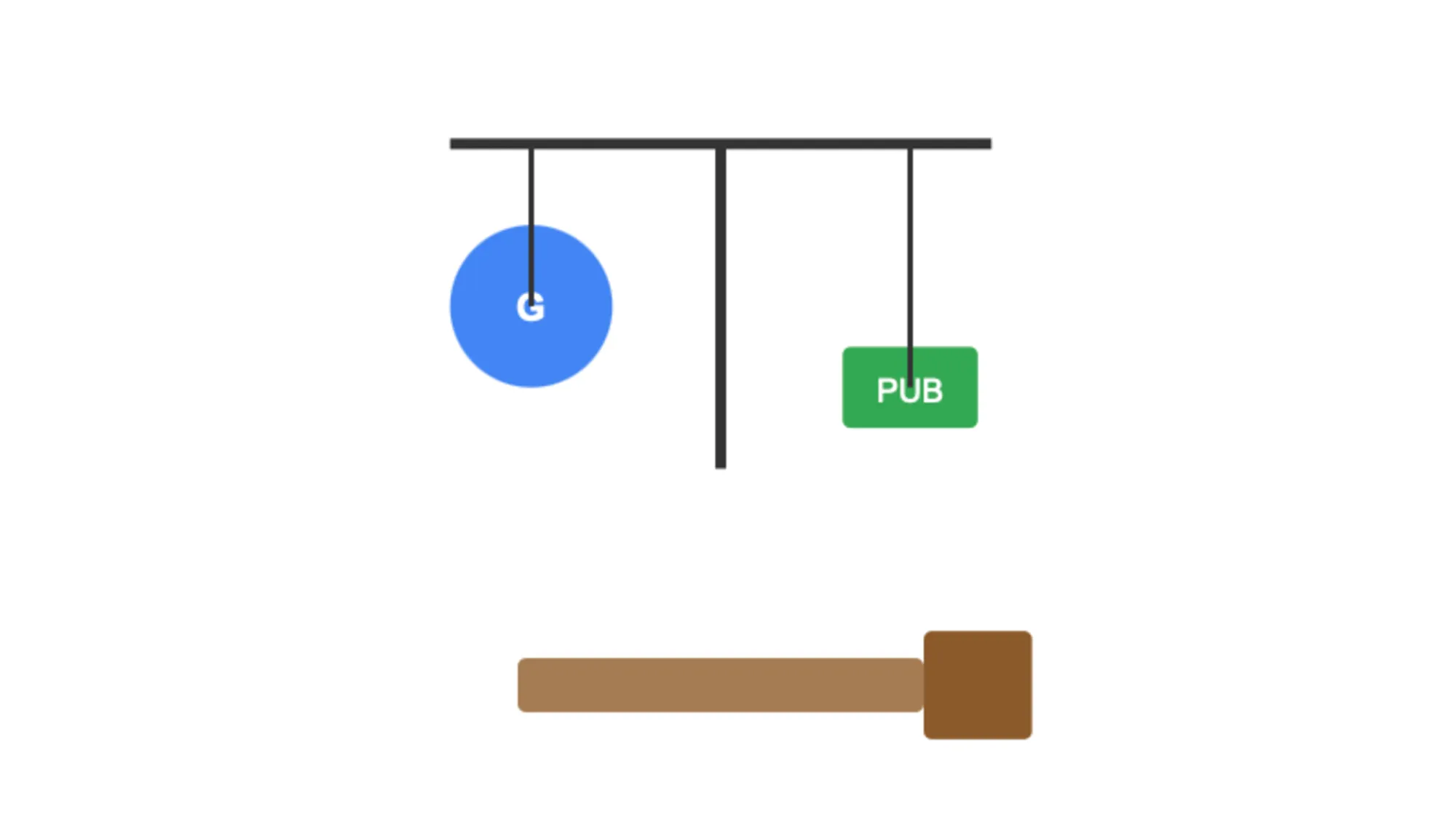Court rules Google monopolized digital ad tech markets
Google monopolized key digital advertising markets according to federal court ruling.

The Eastern District of Virginia has ruled that Google illegally monopolized two crucial digital advertising technology markets, finding the tech giant liable for antitrust violations after a three-week bench trial.
Judge Leonie Brinkema issued a 115-page ruling on April 17, 2025 - just today - finding that Google violated Section 2 of the Sherman Act by monopolizing the publisher ad server market and the ad exchange market for open-web display advertising. The court also ruled that Google unlawfully tied these products together in violation of Sections 1 and 2 of the Sherman Act.
The case, brought by the federal government and seventeen states in January 2023, represents one of the most significant antitrust rulings against a major technology company in decades. Judge Brinkema will now determine appropriate remedies for these violations, which could potentially include structural changes to Google's advertising technology business.
The court rejected Google's defense that its conduct represented legitimate business decisions, finding instead that the company engaged in anticompetitive behavior that harmed publishers, advertisers, and ultimately consumers of information on the open web.
"Plaintiffs have proven that Google has willfully engaged in a series of anticompetitive acts to acquire and maintain monopoly power in the publisher ad server and ad exchange markets for open-web display advertising," Judge Brinkema wrote in her opinion.
The ruling explains that Google's core violations centered on tying its publisher ad server (DFP) to its ad exchange (AdX), forcing publishers to use DFP if they wanted access to the unique advertising demand from Google's AdWords platform. This tying arrangement helped Google achieve and maintain a 91% market share in the publisher ad server market.
The court found that Google engaged in additional anticompetitive conduct to entrench its monopoly power, including implementing features called "First Look," "Last Look," and "Unified Pricing Rules" that disadvantaged competitors and restricted publishers' abilities to diversify their revenue sources away from Google.
The ruling also details how Google made key acquisitions like DoubleClick in 2008 and Admeld in 2011 to help establish its dominant position across the advertising technology stack, though the court did not find these acquisitions themselves to be anticompetitive.
Notably, the court dismissed one count of the government's case, finding insufficient evidence that Google monopolized the advertiser ad network market for open-web display advertising. The judge determined that this proposed market was not properly defined because advertisers can substitute different types of display advertising across various channels.
This ruling comes approximately eight months after another federal court found Google liable for monopolizing the search and search text advertising markets in August 2024. Together, these cases represent significant challenges to Google's core business models and could reshape digital advertising markets that underpin much of the free content available online.
The court will now establish a schedule for the parties to submit their positions on appropriate remedies, which could potentially include requiring Google to divest some of its advertising technology products or imposing significant behavioral restrictions on how the company operates its remaining ad tech business.
This ruling has profound implications for digital marketers, publishers, and the broader advertising ecosystem. For years, Google has dominated the infrastructure that connects advertisers with publishers, charging what the court determined were supracompetitive fees while restricting competition through its tied products.
Marketing professionals should pay close attention to the remedies phase of this case, as structural changes to Google's advertising technology stack could create new opportunities for alternative platforms to emerge. This could lead to more competitive pricing, greater transparency, and potentially more innovative advertising solutions that better serve both publishers and advertisers.
Publishers in particular may benefit from increased competition in the ad tech space, as the court found Google maintained its monopoly power partly by preventing publishers from effectively diversifying their revenue sources and by operating auction mechanisms that didn't always deliver publishers the highest possible revenue.
The finding that Google's 20% ad exchange fee has been supracompetitive for over a decade suggests that more competitive markets could lead to lower take rates across the ecosystem, potentially increasing the share of advertising dollars that actually reach publishers.
For smaller advertisers and agencies, increased competition might lead to more options beyond Google's AdWords platform, though the court noted that Google's unique access to small and medium-sized businesses through its search advertising business has been a key source of its power in display advertising.
Timeline of key events
- 2008: Google acquires DoubleClick for $3.1 billion, obtaining the dominant publisher ad server and a nascent ad exchange
- 2011: Google acquires Admeld, a yield management tool that helped publishers decide which ad networks to transact with
- 2014-2015: Header bidding emerges as publishers seek to mitigate Google's advantages in the ad tech stack
- 2017: Google implements Project Poirot to adjust bids in ways that benefit AdX over rival exchanges
- 2018: Google develops Open Bidding as an alternative to header bidding
- 2019: Google implements Unified Pricing Rules, restricting publishers' ability to set higher price floors for AdX
- January 2023: The federal government and eight states file antitrust lawsuit against Google
- April 2023: Nine additional states join the lawsuit
- September 2024: Three-week bench trial concludes
- April 17, 2025: Court issues ruling finding Google liable for monopolization

